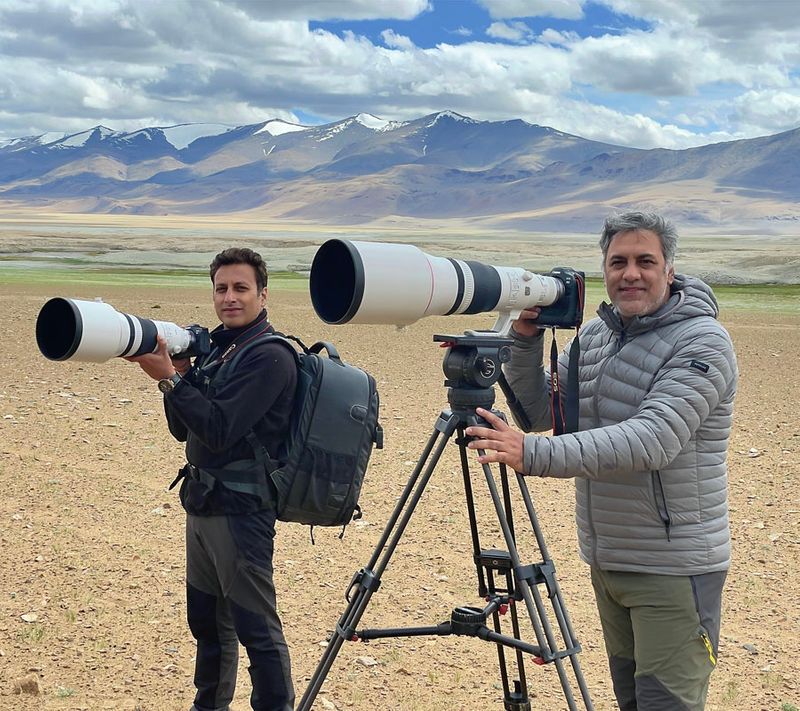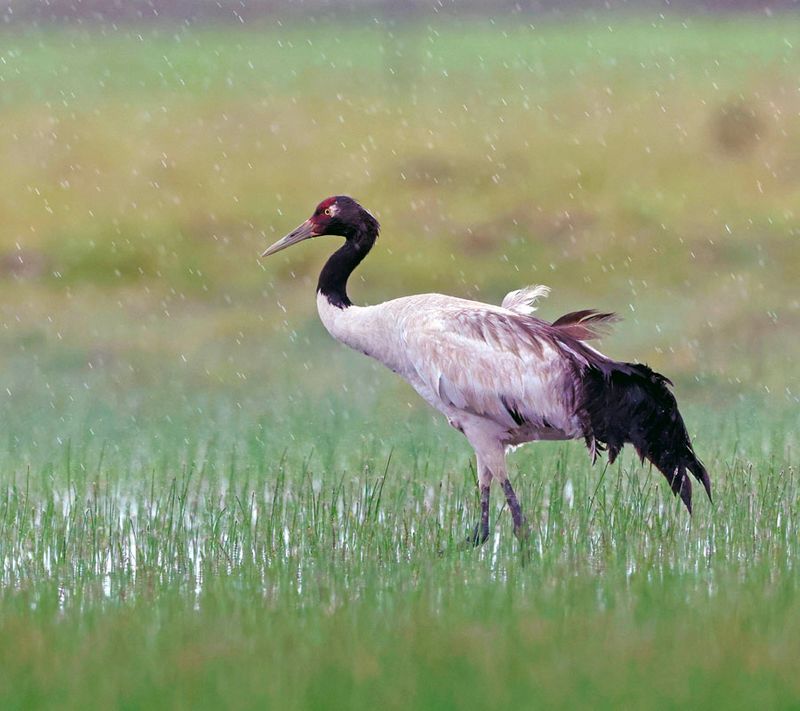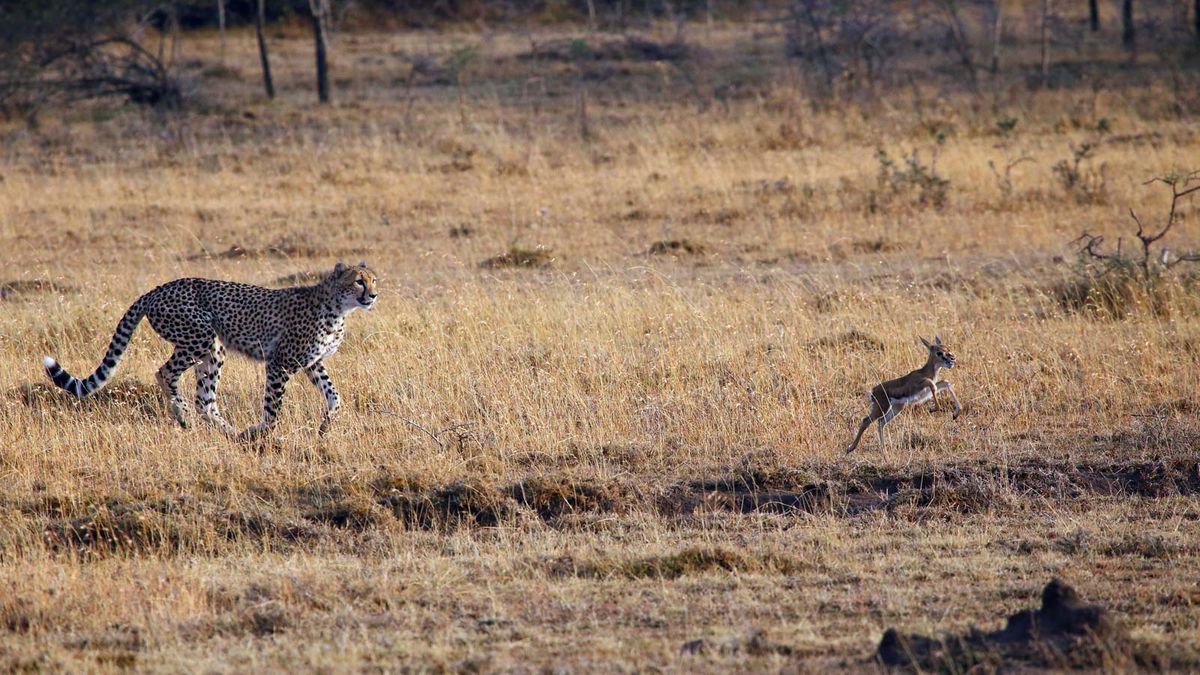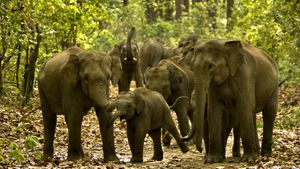When you think wildlife, the mind invariably conjures up a vision of a mighty roaring lion or a herd of elephants, ambling along to the next watering hole. But Earth’s diverse ecosystem nurtures more than just the dominant species. The role of even cricket or a frog in maintaining a balance of nature is crucial but we often forget that.
This is where brothers and veteran filmmakers, Ajay and Vijay Bedi come into the picture. Over the years, they’ve dedicated their craft to telling stories of forest creatures that many of us ignore. The award-winning duo has helmed many wildlife documentary projects, including The Policing of the Langur, which won the prestigious Wild Screen Awards, better known as the Green Oscars, in 2006; and most recently The Secret life of Frogs, which was nominated for an Emmy in 2019.
Capturing the wild through the lens is in the Bedi brothers’ blood. Third-generation wildlife photographers and filmmakers, also Canon Cinema EOS Ambassadors for Canon India, have honed their skills under the watchful eyes of their father and uncle, Naresh and Rajesh Bedi, respectively. But the twin siblings are clear that privilege can help only until a point. “If you don’t have the skills and if you don’t challenge yourself, you won’t make it in this world,” says Vijay.
Given the current environment, Vijay adds: “We have to make sure we also don’t fall behind when it comes to technology.” Circumstances in the wild are hard to predict so it gets tricky. “If we have more time to control our factors and set up, we prefer the Canon EOS C700 FF which produces very crisp video quality,” he adds.
We spoke to Vijay to understand the nuances of being a cinematographer in the wild.
1. What are the challenges and benefits of being third generation wildlife photographers?

It was a privilege to have been able to learn skills from our father and our grandfather. But we were also clear that they had set the bar quite high, and we could not afford to be laid-back about our craft. That doesn’t make our job easier, but in fact, makes us want to deliver high-quality work just like my father and grandfather have done in the past—and that gave us a much bigger challenge. We love this challenge, which gives us the opportunity to work harder and push our boundaries.
2. How do you stay true to your craft as individuals without letting your relationship interfere?
Working closely with my twin brother, who is just six minutes elder to me, helps a lot. While I may have an eye for filming, he has superb editing skills. We respect each other’s skills but there’s also a lot of give and take. Of course, we have our moments of disagreement as well, but that is what makes the story rich! A visual art form is very subjective, and no two people will click the same picture. So varied viewpoints make for more nuanced filmmaking.
3. From The Policing Langurs to The Secret Life of Frogs, your wildlife documentary subjects give the impression that you focus on the underdog creatures of the wild. Is this intentional?

Yes, you are absolutely right that we want to celebrate the underdog and shine a light on them. Ajay and I are keen on visual storytelling that celebrates the lesser-known species of India. Our films have been unique and challenging, not just physically but also in terms of trying to sell our films. When we wanted to make a film on red pandas (Cherub of the Mist) that are seen quite rarely, we were worried if we chose the right subject. Then with amphibians too, we were concerned about how we could market a film on frogs. Ultimately, the risks paid off.
4. Why is it important to throw the spotlight on these creatures as much as India's megafauna?
At a time when most filmmakers focus on charismatic megafauna, we are glad to have chosen amphibians as our protagonists. These are creatures smaller than your thumbnail. Every moment was worth it, given that few are telling the story of these creatures that are as endangered as the tiger or any other big species. The handful of people working for their conservation needs to be celebrated as well and they are heroes too in our film.
5. In your experience, how has documenting wildlife helped with conservation efforts?
For us, documenting wildlife or taking a picture to put out on social media is not enough. Does the film inspire you to take action, does it give you goosebumps, does it move you emotionally or shift the needle for policy changes? That’s our inspiration for making natural history films. For example, while making our film on amphibians we came across a Salamander that speaks! And our accidental discovery in the edit bay while working on our film is now part of a scientific paper that's out in a journal. The lizard-like amphibian, the Himalayan Salamander, is found in India in small ponds in Darjeeling, West Bengal. This cryptic species hasn't been studied much. And so, we were thrilled to have co-authored a paper, imagine as filmmakers!
6. Wildlife photography and cinematography is all about patience and is not glamorous. What’s your take on this?

Every film takes almost three years to complete; it requires sitting in one place in the forest for days on end waiting for the animal to display that one behaviour which may count for just 10 seconds in your film and yet is central to our story. We don’t have any actors with scripts that can show up at a designated spot. Our characters are real animals and birds who can’t be ordered to behave a certain way simply because our cameras are rolling. So, wildlife film-making is about a lot of patience. I have waited at one spot in the Western Ghats for 28 days for just this one shot of a frog emerging from the underground. I have chased a tiger through thick jungles just following the ‘click’ sound of its radio-collared antenna for many days without getting any visuals of it. These are the challenges, but that’s what makes this such an exhilarating task.
7. You have also worked on commercial and non-wildlife related shoots and films. How would you compare the two?
Working with humans is easy—you can direct them, you can ask them to stand here and there, so non-wildlife shoots are easy. In wildlife shoots though, we don’t go with a fabricated script, you wait for nature to tell the story it wants to tell. The non-wildlife films definitely pay better and have larger audiences. So, we use our craft for all kinds of storytelling—we have made documentaries from tourism to education. The truth is, in India, there is very little state or national funding for any documentary films. In the past, most of our films have been self-commissioned and they’ve aired on international channels. So, to keep balance with wildlife projects we take up freelance assignments for camera work, editing, and direction which pay much more. And we put that money back into our wildlife films and photography assignments.
8. What would your advice be to aspiring wildlife photography enthusiasts?
Our advice to upcoming photographers is to keep clicking. We get so many queries, asking for which camera they should buy to take wildlife photos. Whether it is from your phones or any other camera, if you don’t click, make mistakes, and improvise to have a better picture you won’t learn. And I also think it is imperative to be an ethical photographer when it comes to wildlife. Don’t disturb biodiversity, don’t make a noise just to get that shot of a bird flying—wait patiently for the subject to display its natural behaviour. That can happen in a day, weeks, months, or in some years—but when you make that connection, magic happens and you will create a piece of art through your camera!
9) With the pandemic and lockdown, there has been an increased interest in wildlife safaris and retreats. What are the pros and cons of this trend?
Tourism, if regulated, can be a very powerful tool not just for biodiversity but also for the people who live around protected areas. But tiger-centric tourism where 100 cars park themselves around one big cat so it can’t even move is plain wrong. It’s awesome that the pandemic is making people reset their relationship with nature, but nature-based tourism must include many other things such as walking through a forest or being sensitive to the communities who live around the sanctuary than just hopping on to a jeep to take pictures of a tiger. In a post-pandemic world, I hope nature-based tourism becomes so much more.




